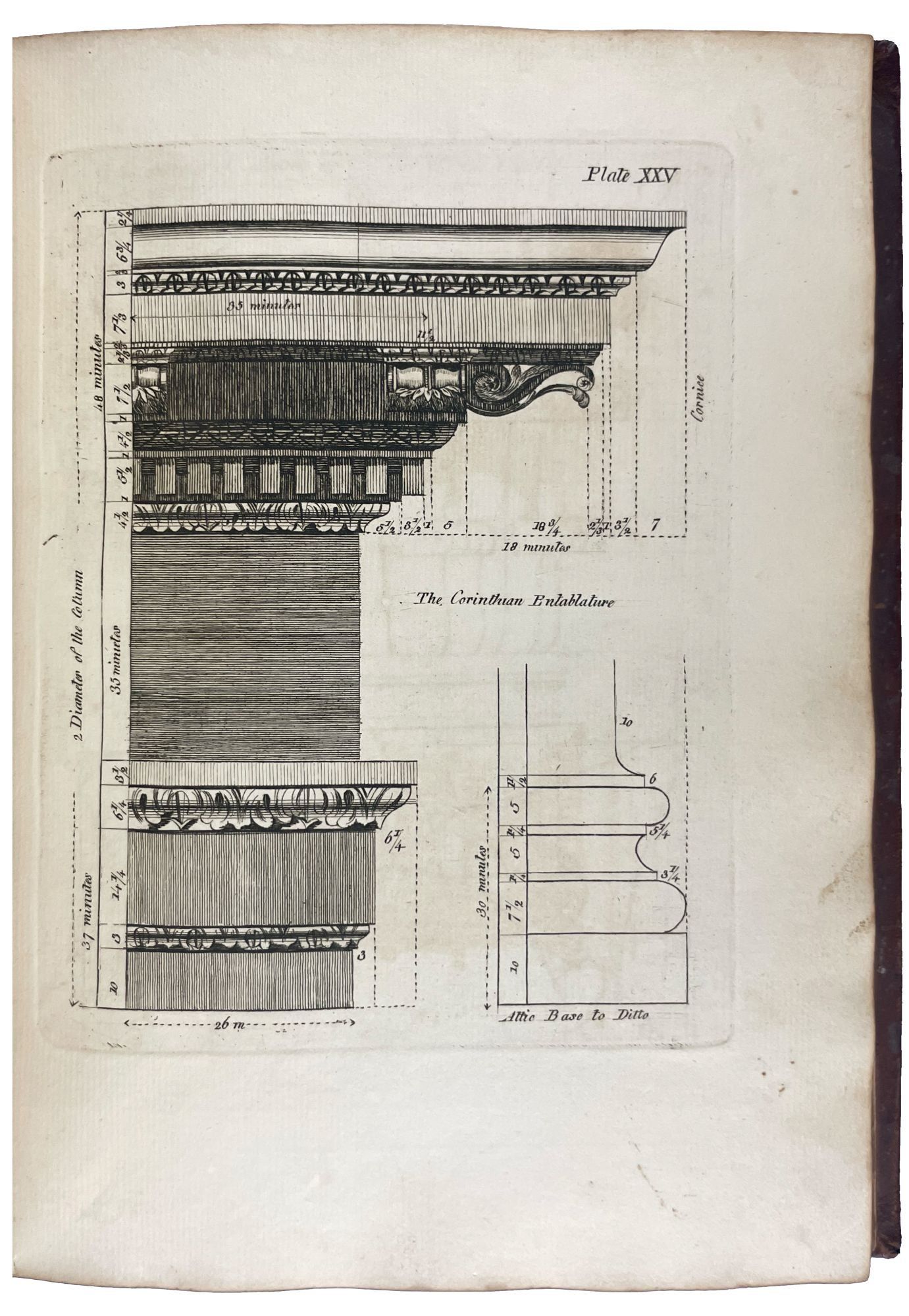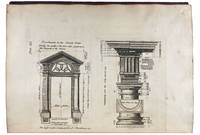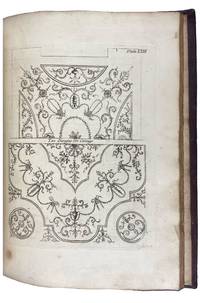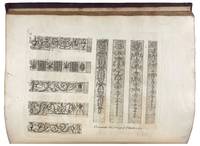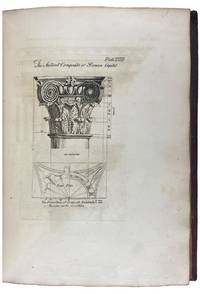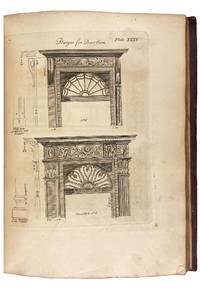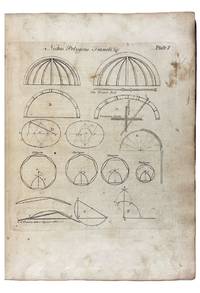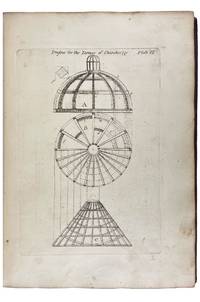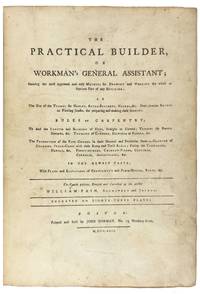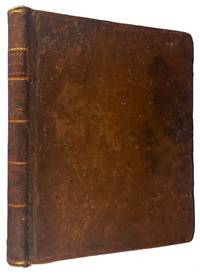The Practical Builder, or Workman's General Assistant
- SIGNED 4to
- Boston: Printed and Sold by John Norman, No. 75 Newbury Street, 1792
Boston: Printed and Sold by John Norman, No. 75 Newbury Street, 1792. 4to. (10 5/6 x 8 inches). First American edition. Fourth edition, revised and corrected. [A]2 B2 [83 Plates]. 87 ff. [1]-8 [166]. 174 pp. Title, Preface, Table of Contents, Explanations of Plates, Table for Cutting of Timber for Building, Plates I-LXXXIII of copper engravings printed recto, versos blank. On title page the edition statement is transposed and precedes "engraved on eighty-three plates" Original full sheep, expert repairs, red morocco lettering-piece in second compartment, spine ruled in gilt in six compartments.
First American edition of one of the earliest do-it-yourself architectural and carpentry manuals ever printed, in a contemporary binding, with 83 exquisitely engraved plates.
William Pain, an English builder and joiner, published numerous architectural pattern books in London from the 1750s through the 1790s. They were received with great enthusiasm. Pain's Practical Builder, originally published in London in 1774, was the first of his titles to see an American edition published. The present copy is an example of the 1792 first American edition of the fourth revised and corrected edition of Pain's Practical Builder. It is the fourth architectural book printed in America (the three previously published books were two of Swan and one by Norman). Pain's manuals and pattern books democratized furniture and construction designs and techniques and was a useful resource to the layman as well as the professional. Those unable to afford an architect's services could feel confident in the good taste of their residence by selecting designs from a Pain pattern book. Employing elementary arithmetic and geometry, the guide's annotated and meticulously rendered copper engravings depict cross-sections of chimneys, ceilings, and cornices. There is an added emphasis on features such as roofing and staircase design which required skills in carpentry and joinery - Pain's personal specialities. This work and Pain's other pattern books such as the Practical House Carpenter, were used directly by tradesmen such as cabinetmakers and carvers in their workshops. The Practical Builder's practical use by carpenters in the course of their work in the previous 230 years has led in part to its rarity - but the present copy is in remarkably good condition. There are few American architectural books printed prior to 1800 - an "incunabula" marker for this particular niche in American publishing. The Practical Builder was in such demand that it went through four subsequent American editions, as well as eight London editions in 1776, 1778, 1787, 1789, 1792, 1793, and 1799.
Archer 240.1. BAL Catalog 2371. ESTC N63522, T96026 (London). Evans 25956. Harris, British Architectural Books and Writers 645. Hitchcock 896. RIBA 2359 (note). Rink 2474. Schimmelman pp.418-9. Wiebenson III-C-24.
First American edition of one of the earliest do-it-yourself architectural and carpentry manuals ever printed, in a contemporary binding, with 83 exquisitely engraved plates.
William Pain, an English builder and joiner, published numerous architectural pattern books in London from the 1750s through the 1790s. They were received with great enthusiasm. Pain's Practical Builder, originally published in London in 1774, was the first of his titles to see an American edition published. The present copy is an example of the 1792 first American edition of the fourth revised and corrected edition of Pain's Practical Builder. It is the fourth architectural book printed in America (the three previously published books were two of Swan and one by Norman). Pain's manuals and pattern books democratized furniture and construction designs and techniques and was a useful resource to the layman as well as the professional. Those unable to afford an architect's services could feel confident in the good taste of their residence by selecting designs from a Pain pattern book. Employing elementary arithmetic and geometry, the guide's annotated and meticulously rendered copper engravings depict cross-sections of chimneys, ceilings, and cornices. There is an added emphasis on features such as roofing and staircase design which required skills in carpentry and joinery - Pain's personal specialities. This work and Pain's other pattern books such as the Practical House Carpenter, were used directly by tradesmen such as cabinetmakers and carvers in their workshops. The Practical Builder's practical use by carpenters in the course of their work in the previous 230 years has led in part to its rarity - but the present copy is in remarkably good condition. There are few American architectural books printed prior to 1800 - an "incunabula" marker for this particular niche in American publishing. The Practical Builder was in such demand that it went through four subsequent American editions, as well as eight London editions in 1776, 1778, 1787, 1789, 1792, 1793, and 1799.
Archer 240.1. BAL Catalog 2371. ESTC N63522, T96026 (London). Evans 25956. Harris, British Architectural Books and Writers 645. Hitchcock 896. RIBA 2359 (note). Rink 2474. Schimmelman pp.418-9. Wiebenson III-C-24.


